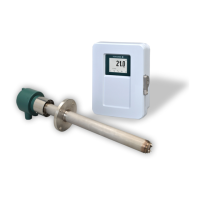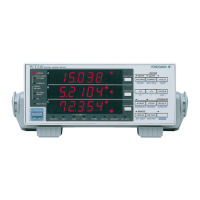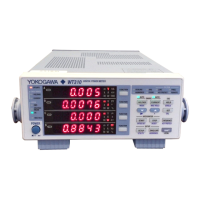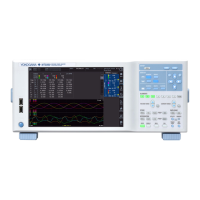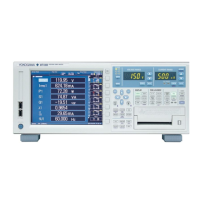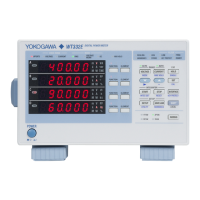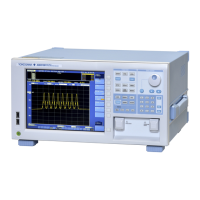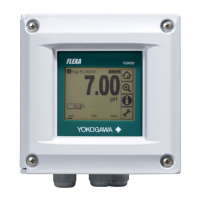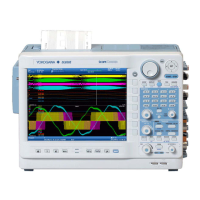<12. Troubleshooting>
12-6
IM 11M12A01-04E 11th Edition : Jul. 19, 2017-00
l Alarm 7: Span Calibration Coefcient Alarm
In calibration, this alarm is generated when the span gas correction ratio is out of the range of 0 ±
18% (refer to Section 9.1.4, “Compensation”).
The following are suspected as the cause:
(1) The oxygen concentration of the span gas does not agree with the value of the span gas set
“Calibration setup.”
(2) The ow of the span gas is out of the specied ow value (600 ± 60 ml/min).
(3) The cell assembly is damaged and the cell voltage is abnormal.
<Search for cause of failure and Take measures>
(1) Conrm the following and carry out calibration again:
If the items are not within their proper states, correct them.
a. If the display “Span gas conc.” is selected in “Calibration setup,” the set value should
agree
with the concentration of span gas actually used.
b. The calibration gas tubing should be constructed so that the span gas does not leak.
(2) If no alarm is generated as a result of carrying out re-calibration, it is suspected that
improper calibration conditions were the cause of the alarm in the preceding calibration. In
this case, no specic restoration is necessary.
(3) If an alarm is generated again as a result of carrying out re-calibration, deterioration of or
damage to the cell (sensor) is suspected as the cause of the alarm. Replacement of the
cell with a new one is necessary. However, before replacement, carry out the procedure
described in step (3) and later of <Search for cause of failure and taking measure> in
Section 12.2.2.2, “Alarm 6: Zero Calibration Coefcient Alarm.”
l Alarm 8: EMF Stabilization Time Over
This alarm is generated if the sensor (cell) voltage has not stabilized even after the calibration
time is up for the reason that the calibration gas (zero gas or span gas) has not lled the sensor
assembly of the detector.
<Cause of alarm>
(1) The ow of the calibration gas is less than normal (a specied ow of 600 ± 60 ml/min).
(2) The length or thickness of the calibration gas tubing has been changed (lengthened or
thickened).
(3) The measuring gas ows toward the tip of the probe.
(4) The sensor (cell) response has deteriorated.
<Search for cause of failure and Take measures>
(1) Carry out calibration by passing the calibration gas at the specied ow (600 ± 60 ml/min)
after checking that there is no leakage in the tubing.
(2) If calibration is carried out normally, perform a steady operation without changing the
conditions. If the error occurs again, check whether or not the reason is applicable to the
following and then replace the sensor assembly.
• A lot of dust and the like may be sticking to the tip of the sensor. If dust is found, clean and
remove the dust (see Section 11.1.1).
In addition, if an error occurs in calibration even after the cell assembly is replaced, the inuence
of sample gas ow may be suspected. Do not let the sample gas ow toward the tip of the
detector probe, for example, by changing the mounting position of the detector.
l Alarm 10: Cold Junction Temperature Alarm
The equipment incorporates a temperature sensor. An alarm is issued when the sensor
temperature exceeds 85°C. If internal temperature of this equipment exceeds 85°C, the
electronics may fail.
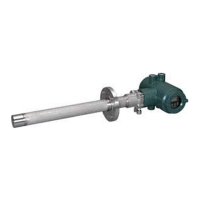
